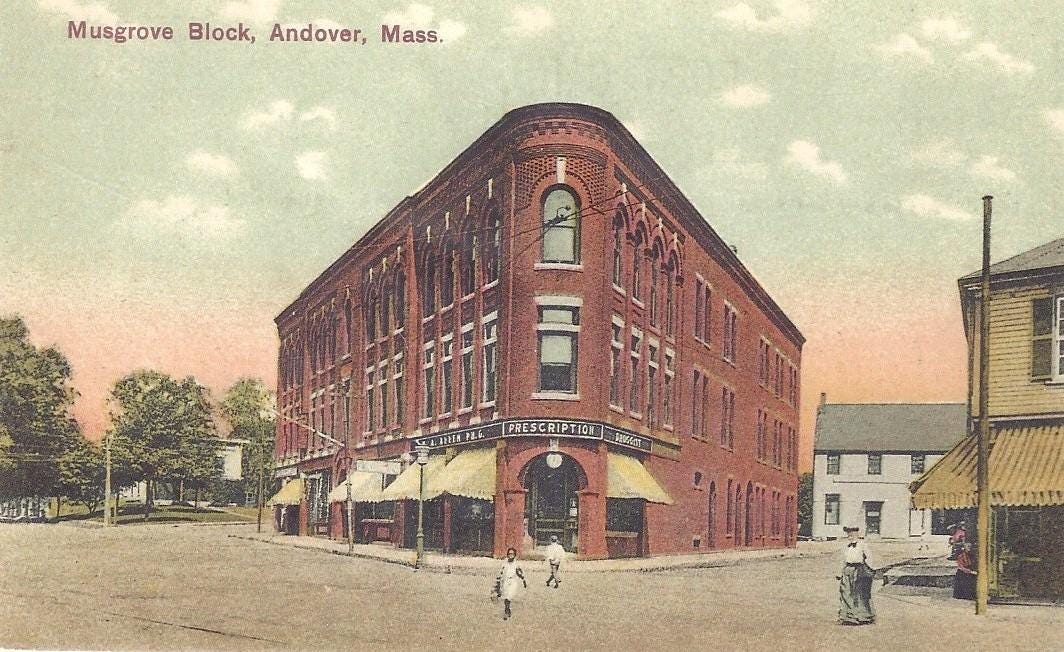You may know the building…but what's in the name?
ACHC #1973.025.40
The Musgrove Block was built in 1894-1895. Its construction changed Elm Square from a small-town village to the Main Street we know today.
ACHC #1989.611.1, Elm Square early 1880’s
Who was Musgrove?
A clue is in our collection! This beautiful, very large, gild-framed certificate was given in acknowledgement of the achievements of one Sir John Musgrove who was Lord Mayor of London from 1850-1851.
ACHC #1993.046.3ab
It reads:
“A Common Council holden in the Chamber of the Guildhall of the City of London on Thursday, the 20th day of November 1851
Be Resolved,
That the Thanks of this Court be presented to
The Right Honourable Sir John Musgrove Late Lord Mayor of this City
For the very able and efficient manner in which he discharged the important duties of Chief Magistrate during the past year, a period eminently distinguished for the cultivation of the arts and sciences and the extension of friendly intercourse with all the habitable globe, for his upright administration of justice for the punctuality and attention which distinguished him upon all occasions, for the liberal support he cheerfully extended to the numerous charitable institutions which adorn the metropolis of the British Empire, for his promptitude in the convening the meetings of this Court and the strict impartiality he displayed in presiding over its deliberations.”
It was presented by the then Mayor, William Hunter, to Sir John Musgrove on the completion of his one-year term as Mayor of London.
ACHC #1979.116.4, Sir John Musgrove
So what’s the connection to Andover?
Sir John Musgrove had no children when he died in 1881. He did have a sister Elizabeth. Elizabeth just happened to live in Andover, MA as she was married to Henry George Tyer. Henry, who had patented a special method of making white rubber, founded Andover’s Tyer Rubber Company.
Following English custom, when Musgrove died, his estate including a large amount of money and real estate in England, went to his sister’s husband. However, Henry George Tyer died in 1882, before the estate could be settled. The money was divided among Henry and Elizabeth’s remaining five children, including daughter, Francis Tyer Flint.
All the children invested in stock of their father’s Tyer Rubber Company. Mrs. Flint, whose husband was John H. Flint, a successful real estate businessman, also spent some of her inheritance on purchasing property on Elm Street. Her husband, John, developed the site to be the Musgrove Block.
ACHC #1990.101.19
And that’s why we have a building that bears the family name of Sir John Musgrove, 1st Baronet of Speldhurst and Lord Mayor of London. His money made it possible!
Next time you pass by Elm Street and Main, you'll know. Andover once had a connection to British peerage.









